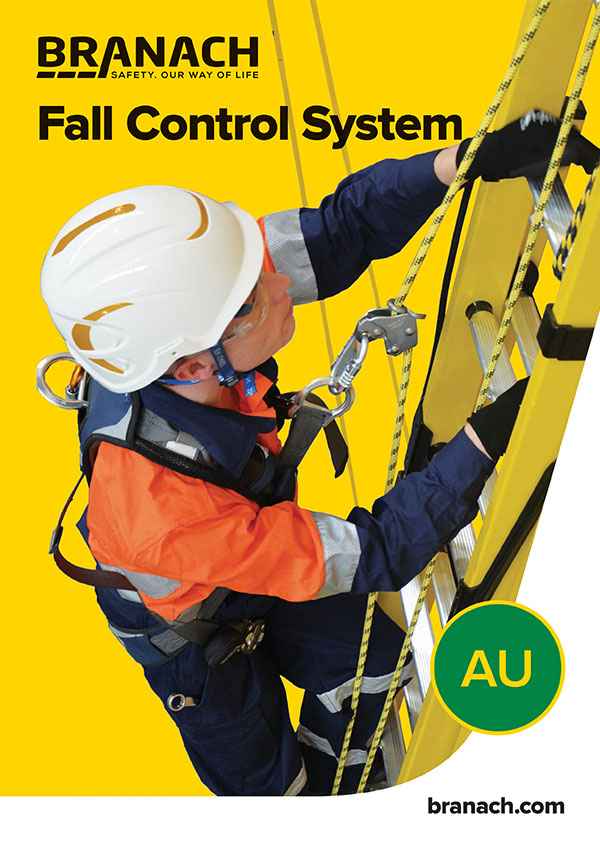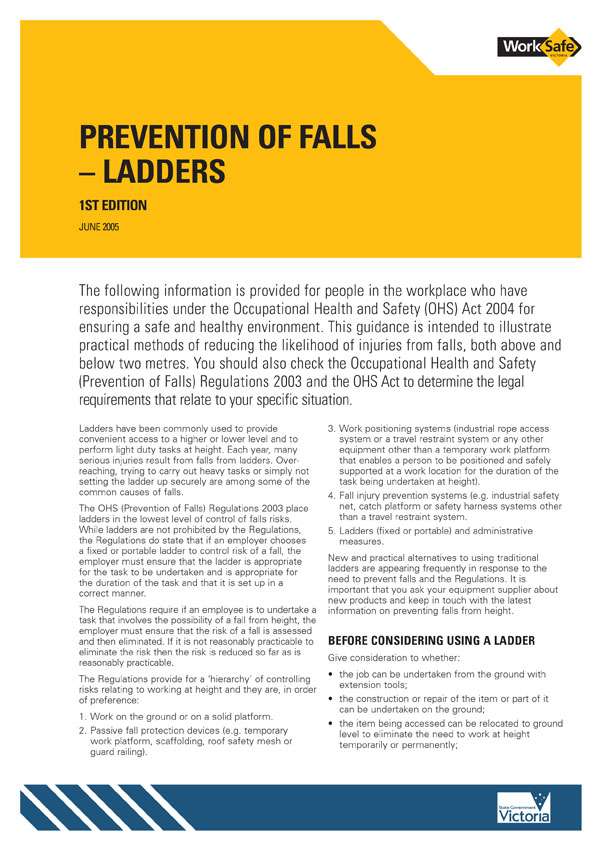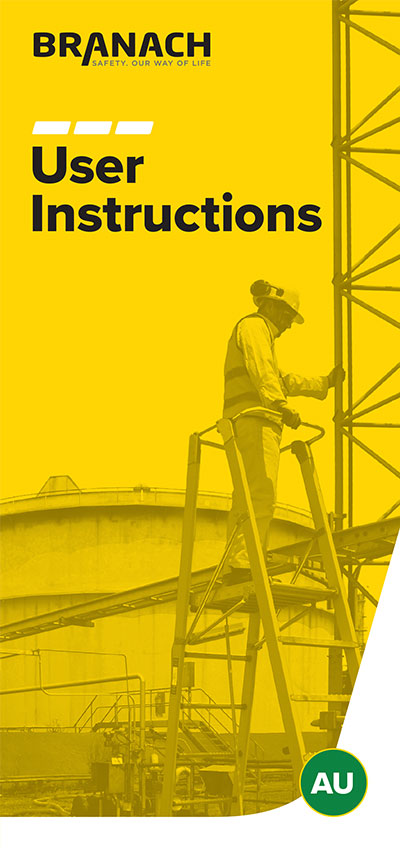
Support
Videos
Products
About Branach
Publications
Brochures
User Instructions
Occupational Health and Safety
Working at Heights: Heirachy of Control
Important steps for the prevention of falls from heights in the workplace.
Level 1: Undertake the work on the ground or on a solid construction
This first level aims to eliminate the hazard. The Victorian code of practice suggests a host of measures, from using extendable handles on window cleaning equipment and paint rollers to tilt-slab concrete wall construction, as alternatives to working at height. The definition of a “solid construction” is a little more complex but in practice, this is a stable platform with guardrails and appropriate access.
Level 2: Undertake the work using a passive fall protection device
“Passive fall protection device” covers a range of height safety products that once installed, need no alteration. Examples include fixed or mobile scaffolds, safety step platforms, guard rails, scissor lifts and cherry pickers.
Level 3: Undertake the work using a work positioning system
If neither eliminating the risk or level 2 controls is practicable, consider “work positioning” or "fall restraint" systems. They prevent workers falling over an unprotected edge and are typically harnesses attached by lanyards to roof anchors or static lines, or harnesses with ropes and friction devices. Because their effectiveness depends entirely on the skills of their users and how well the equipment is maintained, both users and their supervisors should undertake competency-based training before implementing level 3 safeguards.
Level 4: Undertake the work using a fall injury prevention system
While work positioning systems prevent the fall from occurring at all, level 4 controls merely minimise the distance of the fall. Examples include safety nets, wire mesh, catch platforms and individual fall arrest systems (IFAS). All must be installed by people with specialist technical skills and workers using IFAS must also be highly trained.
Both the authorities and safety professionals acknowledge that a fall arrest system requires considerable skill to use safely, and in the event of an arrested fall, is likely to cause some physical injury to the user. Workers using IFAS should never work alone and an emergency plan needs to be put in place to allow a speedy rescue.
Level 5: Undertake the work from ladders or implement administrative controls
The last resort for working safely at height encompasses ladders and procedures, or “administrative controls" such as instruction and training on the implementation of safe work practices.
Australian State Regulation
Australian Capital Territory
WorkSafe ACTNew South Wales
SafeWork NSWNorthern Territory
NT WorkSafeQueensland
WorkCover QueenslandSouth Australia
SafeWork SATasmania
WorkSafe TasmaniaVictoria
WorkSafe VictoriaWestern Australiay
WorkCover WA



















